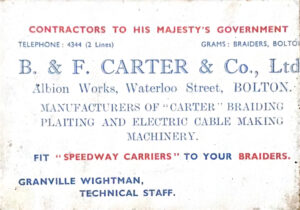It is about time that Grandad appeared in this research blog for without him this would not be happening…(this is also true of a number of other important people especially Mum, Bev, and Roger).

My Grandad used to say ‘human beings need limitations’ and he set his own limitations in his weekly schedule of task and activities in retirement (to the point we knew pretty much what he was doing and where he was on any given day). Within these limitations, he maintained his mind, body, and spirit – he flourished and he continued to flourish until he was 98 years of age. He was locally described as a ‘legend’ and he was regularly witnessed walking miles each day (he would always walk to Warwick Market on Saturdays which is at least 5 miles from his house). For decades he did not appear to age or change and resembled the Ryder Haggard character who had walked through the flame of youth (Haggard was one of his favourite writers). He was 94 years old in the photograph above.
Grandad is also the reason that my PhD research is possible – all those trips to Warwick to buy the cheapest tomatoes or bananas in Warwickshire accrued an inheritance that funds this research time. I ‘thank’ him every day in each breath and each step. Ironically, the item that I really wanted to inherit was a cartoon of Grandad when he was an apprentice drawn by his colleague at GEC where he worked all his life. We never found this particular one, but as the wise men (aka The Stones) say ‘you can’t always get what you want, but you find sometimes you get what you need!’ You can’t always get a certain cartoon, but you find sometimes you get 3 years of research freedom!
Mum did find some others cartoons that Grandad had saved by the same colleague (unfortunately we do not know his name), which are below:

This cartoon perfectly captures my Grandad’s forehead and oft expression and it is drawn on the back of this recycled piece of card (I love this bit of trapped historical ephemera):


Grandad was a keen member of the Coventry Cycling Club back then and all through the war he edited their magazine and sent it to to the troops overseas (while back in the UK he had a reserved occupation as an engineer and tested jets and rockets). A little hint of his interest in bikes is here:

Comics is a magical medium in that it has limitless possibilities, but these are best exploited within limitations to flourish. Cartooning funnies in particular has limitations with its minimal ‘cute’ visual style, its use of panel limitations often in single panels or limited strips, and finally the limited space for supportive text. My comics practice over the last year has illustrated that beginners (and especially this beginner) in particular need to work with limitations. These liberate from their expectations and the panic from the potential of limitless possibility.
Cartoonist Calman describes his own development as a cartoonist at the Daily Express and its useful limits when he began doing illustrations for stories.
‘They were not really cartoons – more humorous drawings with some visual twist added. There was no room for words or captions. As they had to be small (rarely deeper than 1 – 1/2 inches by a single column) I had to learn how to compress a great deal into a tiny space.
I learned the virtues of economy. I learned how to think and draw very quickly; everything seemed to be in a hurry. There was rarely time to look up a picture reference, so I had to use and develop my memory. I slowly built up a cartoon vocabulary, so that I could express a shorthand version of almost anything I wanted to draw. I learned the difference between drawing for oneself (as I did as a student) and communicating with other people’ 1986: 46)
Grandad sets the background of the important magic of limitations and I am reminded everywhere in practice, in reading and in conversation. In my own comics practice, I flounder without limitations. When I recently struggled with big complicated breakdowns, Nicola Streeten quickly advised working in the limitations of single-panels or short strips. This week when I was overwhelmed and felt like I could not cope with tasks, Simone Lia advised to set parameters for the tasks to be manageable and to keep feelings of creative freedom.
All of this began with Grandad, but leads essentially to practice ahead and exercises to develop where limitations are exploited to help creators flourish and find freedom.
The intention ahead is to exploit limitations for freedom in restrictions of time, of lines, of shapes, of panels, of word, and of image use, and even of ‘photo ref’. All of this needs to be broken into exercises that I might frame under ‘comics minimalism’ or perhaps just under ‘limitations to flourish and be free.’
I cannot wait to discover the freedom within the limitations.
Reference:
Calman, M. (1986) What else do you do? Some sketches from a cartoonist’s life. London: Methuen